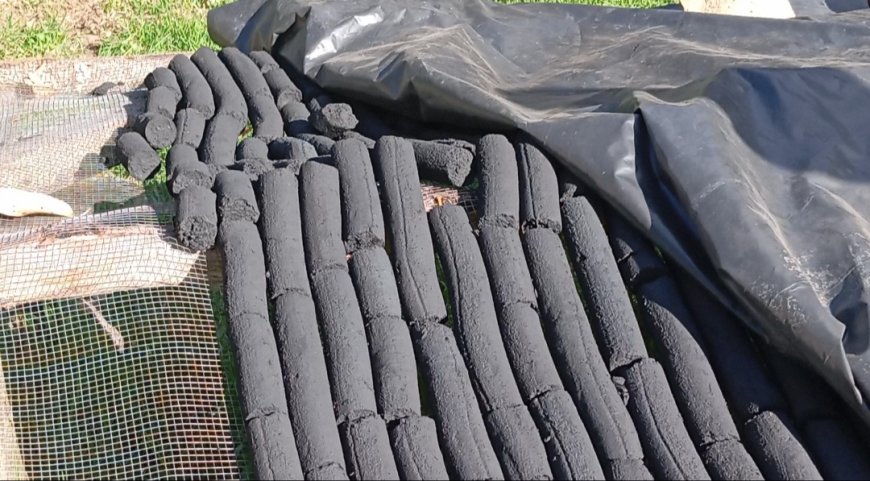Waste-to-energy: A Boost to Kenya’s Transition to Clean Energy

By Sharon Ambani
At the heart of South Kabras Ward in Kakamega County of Western Kenya lies a lively upcoming town. The area that was once a dull village has been brought to life, thanks to the presence of one of the well-known sugar factories in Kenya.
Farmers in the area grow sugarcane to supply raw materials to the West Kenya Sugar Company. Several business people are trading goods and services to meet the needs of an increasing number of residents. The booming business environment has also led to improved infrastructure in the area.
“Our youths have been employed to run operations in the factory. I have also raised my family using the income I get from growing and selling sugarcane to them. We are grateful for the company’s presence amidst us,” says Wafula Juma, a resident of Shiruma village.
While the people living near the factory acknowledge the positive socio-economic development it has brought, they confess to experiencing the other side of the coin. They recall cooperating with the company by giving land where the bagasse would be dumped. However, they had very little knowledge of the aftermath. They are currently grappling with the disastrous environmental and health impacts brought by the huge mountains of disposed bagasse waste.
As one nears the dumping site, they are hit by an unwelcoming odour from the waste that has existed for many years. Plumes of smoke caused by random fires from the ignited dry fibrous residue increase with every blow of the wind. Livestock munch on the grass from nearby fields filled with darkened pools of dirty water.
“The once clean water sources are now contaminated. We can no longer use the water for domestic or agricultural use. Women are forced to walk for long distances to fetch water from the next village where the company drilled water. Our livestock have died from drinking the affected water, but we have nowhere else to take the remaining ones for grazing,” sadly noted Juma.

A pool of contaminated water near burning bagasse heap
“During dry months, fires strike from nowhere, as you can currently see the smoke coming from one of the heaps. Sometimes the smoke is too much that you can't see where you are going. When there is a strong wind, it blows the ashes and the solid particles in the air and into our houses. During the rainy season, the stench coming from the dump site is unbearable, making our stomachs bloat,” added Sammy Sakula whose land is adjacent to the site.

A cow grazing near affected water
There is more to the negative impacts of the bagasse waste mentioned by the two residents. According to the National Environment Management Authority’s Kakamega County Director John Maniafu, the heaps of waste emit methane gas into the atmosphere. He says methane is among the top greenhouse gases that contribute to the increasing warming of the earth.
Maniafu also says that liquid leaching from the bagasse, once in contact with the soil and water reduces their pH level. This explains why the water in the surrounding area is unsafe to use. In addition, the affected soil has impacted the healthy growth of other foods and crops.
The environmental woes from bagasse waste are widely spread in Kakamega County as it is home to three major sugar-cane milling companies in Kenya. Every ten tonnes of sugarcane crushed is said to produce about 3 tonnes of wet bagasse. Maniafu says the rate of bagasse generated by the millers in the region is higher than the ability and the rate at which the companies manage the waste. He says this has contributed to the adverse effects on the surrounding ecosystem caused by the challenge of unmanaged bagasse waste.
In a wider context, Kenya's sugar production industry, made of over ten factories, is estimated to generate about 2.4 million metric tonnes of bagasse annually, a solid waste product of crushed sugar cane. While a portion of the waste (about 25 per cent) is utilised as a heat source in the factories, a larger volume is discarded in landfills or incinerated in open air. The environmental consequences of this organic waste are profound, hence calling for an urgent sustainable intervention to curb the menace.
However, a beacon of hope emerges not very far from the affected community. An international non-governmental organisation, Eco2librium, has taken up the mantle of transforming this waste into a valuable clean energy resource. The organisation sources bagasse waste from West Sugar Company and then employs an innovative and technological process to create carbonized charcoal briquettes.
The journey from waste to energy begins with the collection and transportation of the bagasse from the sugar factory to the Eco2 site located in Ivakale village in Shinyalu Constituency. The bagasse is then sun-dried for 1 to 2 weeks to remove moisture from the residue. After that, the material undergoes a carbonisation process, where it is burnt in a kiln without oxygen, converting it into black charcoal dust. The dust is then mixed with a binding agent, water and soil. Subsequently, it is compressed using an extruder machine to form cylindrical eco-friendly briquettes.

Charcoal briquettes
The founders of the organisation initiated the process in 2017 to create sustainable solutions to environmental problems such as increased waste and deforestation while providing a livelihood to the community.
“People living around this area depend on firewood to cook. They cut down trees to source wood hence leading to deforestation. The organisation aims at protecting Kakamega Forest, the only tropical rainforest in the country. Therefore, we produce an alternative fuel for the communities around here so they can stop cutting down trees,” explains Jackson Mwanje, a production worker at the Eco2 site.
The project aligns with global efforts to combat climate change by curtailing the need to cut down trees for traditional charcoal production. This promotes Sustainable Development Goal 13; climate action.
Importantly, these briquettes play a pivotal role in promoting Kenya’s transition to clean cooking energy. Biomass contributes a large share of Kenya’s energy demand, with more than 90 per cent of rural households using charcoal, wood fuel and agricultural waste to meet their energy needs. However, most of these fuels are harmful to users’ health and the environment. According to the World Health Organisation, about four million people globally are linked to air pollution from these dirty solid fuels.
Danson Ligare, an engineer and clean energy champion in Kenya, says it is essential to increase the use of clean fuels and technologies in the quest to curb the impacts of household air pollution emitted from traditional fossil fuels.

Danson Ligare, an engineer and clean energy champion in Kenya
“Charcoal briquettes fall under Tier 3 in the Multi-tier Framework developed by the World Bank to monitor the impact of clean cooking solutions. The renewable biomass fuel is a competitive and safe cooking fuel compared to wood and charcoal which fall in Tier 1. They minimise pollution and have increased burning time, making them reliable over non-renewable fuels,” says Ligare.
“The process of making briquettes also helps in managing waste through a circular model of production. The amount of bagasse waste produced annually in Kenya is wanting. This calls for the government and other stakeholders to invest in such initiatives that solve the bulk bagasse waste that lies idle in landfills. We are also developing innovative ways of using other wastes such as municipal waste to produce briquettes that meet the fuel demand in the country,” he added.
Ligare, also part of the Kenya National Clean Cooking Strategy Committee, calls for the sustainability of the bio-energy sector in the country. He says that this is key to Kenya’s aspirations to achieving SDG 7 (affordable and clean energy) and Vision 2030 while contributing to the Paris Agreement, through the country’s Nationally Determined Contribution (NDC) as well as the Climate Change Act (2016).
Institutions and families, particularly women who are tasked with looking for firewood, are benefiting from this sustainable energy source, aligning with Kenya's commitment to embrace clean energy and reduce reliance on fossil fuels.
“Initially I used firewood to cook. Looking for firewood was very cumbersome as forests had been cleared. Also, the soot and smoke from firewood were not good for me and my family. However, I no longer have the burden of fuel ever since I was introduced to charcoal briquettes,” says Saida Nyangasi, a resident from Lurambi in Kakamega.
Saida also says briquettes have reduced the economic burden of acquiring other cooking fuels, as a kilo of briquettes goes for an average of 40 Kenyan shillings unlike a tin of charcoal which currently goes for double the price. This is efficient for families which are struggling with the current hard economic times.
Beyond the environmental impact, the initiative has become an engine for socio-economic growth as it contributes to achieving SDG 8. Mwanje is among the over 30 workers employed by the organisation to foresee the process from production to the assessment of the impact of the fuel on the end users. This has led to the socio-economic development of these workers and their families who depend on the project for their livelihood. In addition, Mwanje says the organisation provides safety for its workers at the production site by providing protective wear such as gumboots, masks and overalls.
The transformation of bagasse waste into carbonised briquettes not only addresses the environmental woes in Kakamega County but also embodies a sustainable solution with far-reaching implications. It exemplifies the power of innovation and circular economy in addressing global challenges, offering a blueprint for waste management, climate action, and the pursuit of sustainable development.








